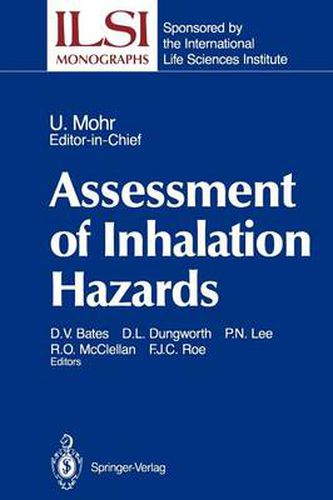Readings Newsletter
Become a Readings Member to make your shopping experience even easier.
Sign in or sign up for free!
You’re not far away from qualifying for FREE standard shipping within Australia
You’ve qualified for FREE standard shipping within Australia
The cart is loading…






This title is printed to order. This book may have been self-published. If so, we cannot guarantee the quality of the content. In the main most books will have gone through the editing process however some may not. We therefore suggest that you be aware of this before ordering this book. If in doubt check either the author or publisher’s details as we are unable to accept any returns unless they are faulty. Please contact us if you have any questions.
The International Life Sciences Institute (ILSI), a nonprofit, public foundation, was established in 1978 to advance the sciences of nutrition, toxicology, and food safety. ILSI promotes the resolution of health and safety issues in these areas by sponsoring research, conferences, publications, and educational programs. Through ILSI’s programs, scientists from government, academia, and industry unite their efforts to resolve issues of critical importance to the public. As part of its commitment to understanding and resolving health and safety issues, ILSI is pleased to sponsor this series of monographs that consolidates new scientific knowledge, defines research needs, and provides a background for the effective application of scientific advances in toxicology and food safety. Alex Malaspina President International Life Sciences Institute Contents Series Foreword … … … … … … … … … … … … … … … . v Contributors … … … … … … … … … … . .… . xiii … … … … . Part I. Integrative Approach to Assessing Human Health Risk: Two Contemporary Problems Chapter 1. Integrating Diverse Data Sets to Assess the Risks of Airborne Pollutants … … … … … … … … … … . 3 R.o. McClellan, R.G. Cuddihy, w.e. Griffith, and J. L. Mauderly Chapter 2. Risk Assessment for Radon Inhalation Based on Animal Exposure Data and Human Epidemiology … … . 23 . F. Steinhausler Part II. Types of Evidence: General Strengths and Weaknesses Section 1. Epidemiological Chapter 3. Inhalation Hazards: The Interpretation of Epidemiologic Evidence… … … … … … . . 39 … … . J.e. Bailar Chapter 4. Problems in Interpreting Epidemiological Data 49 P.N. Lee Section 2. Animal Chapter 5. Rodent Carcinogenicity Studies: Their Value and Limitations… … … … … … … … . . 61 … … … .
$9.00 standard shipping within Australia
FREE standard shipping within Australia for orders over $100.00
Express & International shipping calculated at checkout
This title is printed to order. This book may have been self-published. If so, we cannot guarantee the quality of the content. In the main most books will have gone through the editing process however some may not. We therefore suggest that you be aware of this before ordering this book. If in doubt check either the author or publisher’s details as we are unable to accept any returns unless they are faulty. Please contact us if you have any questions.
The International Life Sciences Institute (ILSI), a nonprofit, public foundation, was established in 1978 to advance the sciences of nutrition, toxicology, and food safety. ILSI promotes the resolution of health and safety issues in these areas by sponsoring research, conferences, publications, and educational programs. Through ILSI’s programs, scientists from government, academia, and industry unite their efforts to resolve issues of critical importance to the public. As part of its commitment to understanding and resolving health and safety issues, ILSI is pleased to sponsor this series of monographs that consolidates new scientific knowledge, defines research needs, and provides a background for the effective application of scientific advances in toxicology and food safety. Alex Malaspina President International Life Sciences Institute Contents Series Foreword … … … … … … … … … … … … … … … . v Contributors … … … … … … … … … … . .… . xiii … … … … . Part I. Integrative Approach to Assessing Human Health Risk: Two Contemporary Problems Chapter 1. Integrating Diverse Data Sets to Assess the Risks of Airborne Pollutants … … … … … … … … … … . 3 R.o. McClellan, R.G. Cuddihy, w.e. Griffith, and J. L. Mauderly Chapter 2. Risk Assessment for Radon Inhalation Based on Animal Exposure Data and Human Epidemiology … … . 23 . F. Steinhausler Part II. Types of Evidence: General Strengths and Weaknesses Section 1. Epidemiological Chapter 3. Inhalation Hazards: The Interpretation of Epidemiologic Evidence… … … … … … . . 39 … … . J.e. Bailar Chapter 4. Problems in Interpreting Epidemiological Data 49 P.N. Lee Section 2. Animal Chapter 5. Rodent Carcinogenicity Studies: Their Value and Limitations… … … … … … … … . . 61 … … … .